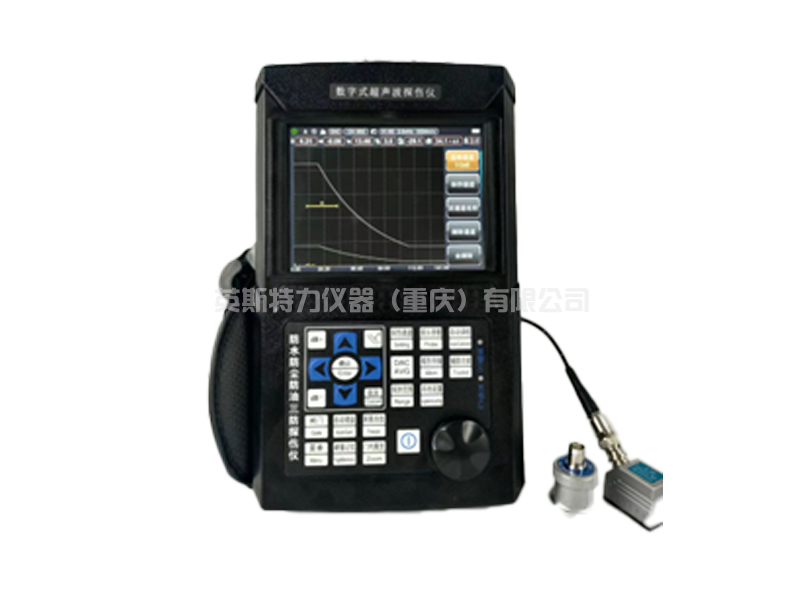造成HR-150洛氏硬度计故障的因素有很多,如:压头、预紧力、主载荷、机架和试样支撑机构、测量指示机构、试件、试验条件、操作人员等。我们分析了一些 它的常见故障。
1.加preload开始时,指针抖动
主要原因:起重螺丝的平键和长键槽松动。 排除方法:更换平键。
2.添加主负载后,指针抖动
主要原因:称重托盘上有油; 缓冲区相对于工作台不水平; 身体不水平。
排除方法:清除托盘上的油渍; 调整缓冲器连接螺钉使其水平; 修正工作台面上的水平。
3、主负载启动时指针跳动
主要原因:装载手柄松动; 缓冲器油量不够。 排除方法:拧紧松动的顶线; 加入油并排出空气。
4.施加主载荷后,指针移动时间长
主要原因:举重臂过长。
解决方法:缩短动臂。 5.添加主负载后,指针不动
主要原因:未添加主负载; 缓冲油针关闭油孔。 排除方法:缩短动臂长度; 打开缓冲器,打开油针。
6.主载荷作用时,指针移动过快
主要原因:缓冲器的调节油针处于最大开度位置; 缓冲器没有油。 排除方法:将油针调整到合适的位置; 加油并排出空气。
7. 施加主要负载时,指针移动太慢
主要原因:缓冲器调节油针偏小; 缓冲油太脏或粘度太大; 百分表测杆摩擦力大; 主轴系统有阻力。
排除方法:将油针调整到合适的位置; 更换适当粘度的油; 消除摩擦; 清洁主轴系统。 8.增加主载荷时,行走时指针停止,快慢
主要原因:缓冲器气缸内有空气; 身体不水平,导致重物碰撞或摩擦身体。 排除方法:排除气缸内的空气; 调整机身水平。
9、去掉主负载后指针跳转
主要原因:配重吊杆的球头、球窝和大杠杆连接处有油污。 解决方法:清洁油。
10、当主负载卸到尽头时,指针突然上升或下降。 主要原因:操纵杆松动。
排除方法:调整并拧紧操纵杆的固定螺钉。 11、A、B、C标尺的硬度值经常偏高
主要原因:测试杠杆比例过大; 预紧力过大; 不增加主载荷; 主要负载重量轻。
排除方法:松开调整板的固定螺钉,将调整板向前移动到合适的位置; 调整预紧力; 缩短动臂; 为每个权重添加权重。
12、A、B、C标尺的硬度值经常偏低
主要原因是:测试杠杆比太小; 预紧力太小; 主载重量过重; 压头未正确安装; 工作台安装不正确; 工件与工作台之间的密封性较差。
排除方法:松开调整板的固定螺钉,将调整板向后移动到合适的位置; 调整预紧力; 调整砝码的重量; 重新安装压头; 重新安装工作台; 重新放置工件。
13.A值合格,C值不合格
主要原因:压头顶部的上锥面不光滑或锥角过大; 压头顶部附近的上锥面损坏。
排除方法:修理或更换压头。 14、A、C值合格,B值不合格
主要原因是:钢球在球座内松动; B压头钢球尺寸偏差大或生锈损坏。 解决方法:重新安装; 更换新的钢球。
15.A、B、C刻度值不稳定
主要原因是:主轴系统有阻力; 主轴端面不平整; 刀片与大杠杆上的支点刀片的接触改变或变钝。
排除方法:清洁主轴系统; 平滑端面; 重新调整位置或用油石打磨刀片。 16、C值高值合格,中低值不合格
主要原因:测试杠杆比例不合适; 压头锥角表面不光滑。 补救措施:调整杠杆率; 修整或更换压头。
17、C值高、中、低值不合格
主要原因:测试杠杆没有正确比较; 测试杆上的调节螺丝尖磨损严重; 不增加主载荷; 金刚石压头损坏; 主轴与工作台同轴度差; 百分表有故障。
补救措施:调整杠杆率; 更换新的调节螺钉; 缩短动臂; 改变压头; 调整起吊螺丝的位置; 修理百分表。
英斯特力仪器是一家集研发、生产及销售于一体的 影像测量仪,拉力试验机, 硬度计 ,探伤仪, 粗糙度仪, 测厚仪, 金相设备厂家, 致力于为客户提供更好的检测仪器。
There are many factors that can cause hr-150 Rockwell hardness tester failure, such as: indenter, preload, main load, frame and sample support mechanism, measurement indicator mechanism, specimen, test condition, operator, etc. We analyzed some of its common faults.
1. The pointer jitter occurs when preload is added
Main reason: lifting screw flat key and long keyway loose. Troubleshooting method: Replace the flat key.
2. After the main load is added, the pointer jitter occurs
Main reasons: there is oil on the weighing tray; Buffer is not level with respect to the workbench; The body is not level.
Elimination method: remove oil stains on the tray; Adjust the buffer connecting screw to make it level; Correct the level of the worktable.
3. The pointer jumps when the main load starts
Main reasons: loose loading handle; There is not enough oil in the buffer. Elimination method: tighten the loose top line; Add oil and exhale air.
4. After the main load is applied, the pointer moves for a long time
Main cause: Long lifting arms.
Solution: Shorten the boom. 5. After the main load is added, the pointer does not move
Main cause: The main load is not added. Buffer oil needle closes oil hole. Elimination method: shorten the boom length; Open the buffer and open the oil needle.
6. The pointer moves too fast when the main load is applied
The main reason: the adjusting oil needle of the buffer is in the maximum opening position; There is no oil in the buffer. Elimination method: adjust the oil needle to the appropriate position; Fuel and air out.
7. The pointer moves too slowly when applying the main load
Main reasons: buffer adjustment oil needle is too small; Buffer oil is too dirty or viscosity is too large; Dial gauge rod friction is large; There is resistance in the spindle system.
Elimination method: adjust the oil needle to the appropriate position; Replace the oil with appropriate viscosity; Eliminate friction; Clean spindle system. 8. When the main load is increased, the pointer stops when walking, fast or slow
Main reasons: there is air in the buffer cylinder; The body is not horizontal, causing heavy objects to bump or rub against the body. Elimination method: eliminate the air in the cylinder; Adjust fuselage level.
9. The pointer jumps after the main load is removed
Main reason: there is oil pollution at the joint of ball head, ball socket and big lever of counterweight derrick. Solution: Clean oil.
10. When the main load ends, the pointer suddenly rises or falls. Main cause: Loose joystick.
Elimination method: Adjust and tighten the fixing screws of the joystick. 11. Hardness values of A, B and C scales are often too high
Main reasons: the test leverage ratio is too large; Preload is too large; Do not increase the main load; Main load weight is light.
Elimination method: loosen the fixing screw of the adjusting plate and move the adjusting plate forward to the appropriate position; Adjust preload; Shorten boom; Add weights for each weight.
12. Hardness values of A, B and C scales are often low
The main reasons are: the test leverage ratio is too small; Preload is too small; The main load is too heavy; The pressure head is not installed correctly; Workbench installation is not correct; Poor sealing between workpiece and workbench.
Elimination method: loosen the fixing screw of the adjusting plate and move the adjusting plate backward to the appropriate position; Adjust preload; Adjust the weight of weights; Reinstall the pressure head; Reinstall workbench; Reposition the artifact.
13.A value is qualified, C value is not qualified
Main reasons: the top cone of the press head is not smooth or the cone Angle is too large; Damage to the upper cone near the top of the head.
Elimination method: repair or replace the pressure head. 14, A, C value qualified, B value unqualified
The main reasons are: the ball in the ball seat loose; B Pressure head steel ball size deviation or rust damage. Solution: Reinstall; Replace a new steel ball.
15. The scale values of A, B and C are unstable
The main reasons are: the spindle system has resistance; Spindle end face is not smooth; Change or blunting of contact between blade and fulcrum blade on large lever.
Elimination method: clean the spindle system; Smooth end face; Reposition or polish the blade with a whetstone. 16, C value high value qualified, low value unqualified
Main reasons: the test leverage ratio is not appropriate; The surface of the cone Angle of the indenter is not smooth. Remedy: adjust leverage ratio; Trim or replace the pressure head.
17. High, medium and low C values are unqualified
Main reasons: the test lever is not correctly compared; The adjusting screw tip on the test rod is seriously worn; Do not increase the main load; Diamond head damage; Spindle and worktable coaxiality difference; The dial indicator is out of order.
Remedy: adjust leverage ratio; Replace the new adjusting screw; Shorten boom; Change the pressure head; Adjust the position of lifting screws; Repair the dial gauge.







 客服1
客服1 